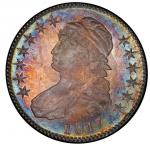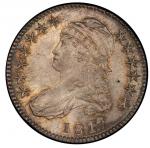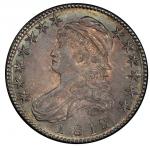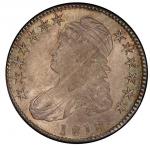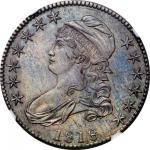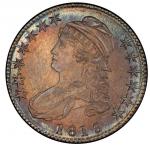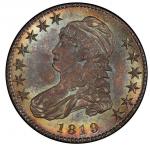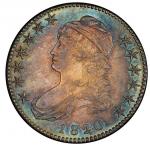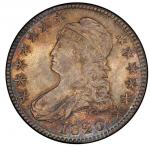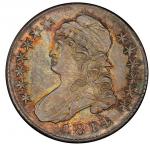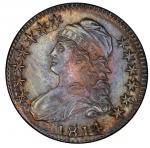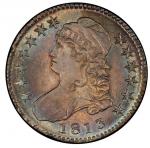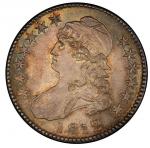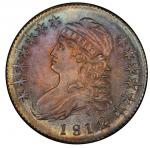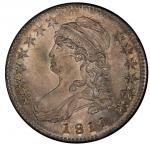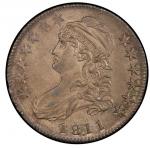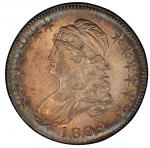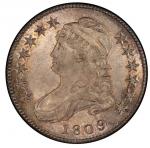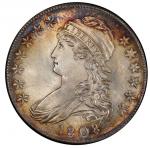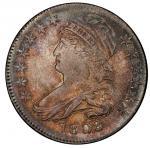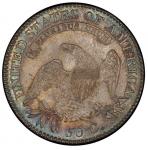Well preserved specimens are not common and are well sought after by variety collectors. -- Al C. Overton..Pale blue toning beautifully encircles frosty silver gray centers, tinted with gold and rich with luster. Exquisitely struck, with every star showing full relief at its center and the central design elements likewise fully detailed. The denticles are long and complete on both sides. Cartwheel spins around the obverse, while the reverse luster has both cartwheel and satiny character. A glass reveals a number of small marks or scuffs on the bust of Liberty, along with a scattering of fine lines in the fields. Die clashing has left its impressions on both sides, visible in the usual spots around the devices and apparently unlapped. A fine short die crack through ME of AMERICA provides the distinction between Overton-101 and the Overton-101a die state seen here.One of the most popular overdates in the Capped Bust half dollar series, the 1817/3 has long been thought to have been produced from a leftover 1813 obverse that was never put into service. While possible, an important data point suggests otherwise: every 1813 obverse shows the scallop or "bite" missing from star 13 on the obverse, a distinctive punch that has long been thought to have been John Reichs signature. This obverse does not. Reichs decade-long career at the Mint ended on March 31, 1817. Between 1807 and 1815, star 13 shows the scallop on every known die variety. Among 1817s, only the 1817/4 die shows this characteristic, good evidence that the 1817/4 was in fact made from a leftover 1814 die. Ivan Leaman and Donald Gunnet showed that this variety used the same edge die used for two 1814 varieties, the only known 1815 variety, as well as what are thought to be the first four varieties coined in 1817 (Overton-101, Overton-102, Overton-103, and Overton-110). Clearly a backlog of half dollar dies existed, since the only known 1815 variety was made from an unused 1812 die and the 1817/4 was made from an unused 1814 die. But why doesnt this die show the same star punches as every 1813 die if it was initially made in 1813? There are only two logical answers. The first is that the 1817/3 was an engraving department error and that a 3 punch was mistaken for a 7. The second is that this die was produced with a device punch and date in 1813 but that the stars were not placed into the die until 1817, after Reichs departure, an order of operations that goes against everything modern numismatists understand about the way dies were produced in the first United States Mint. The more logical of these conclusions is that the 1817/3 was not actually made from a leftover 1813 die, but instead was the product of a punching error. Corollary to that, the Leaman-Gunnet die emission sequence is useful to place certain groups of die varieties together, by virtue of a common edge die, but not useful to order those die varieties within that group. If the 1817/3 was actually a die made in 1817, the 1817/4 overdate was almost certainly the first 1817 half dollar variety coined.This is a stellar specimen, one that ranks among the finest known not just for its preservation but also its strike; compare it to the Mint State T. James Clarke – Harold Bareford specimen whose centers were so soft that the Bareford catalog describes the eagles head as "barely visible." Only one other MS-64+ has been graded by PCGS, a coin sold in July 2013 for $61,687. The Kaufman specimen, graded NGC MS-66, does not appear to have ever been graded by PCGS. The Mills-Clapp-Eliasberg-Soros coin is graded PCGS MS-64 and now resides in a carefully formed Iowa collection.



